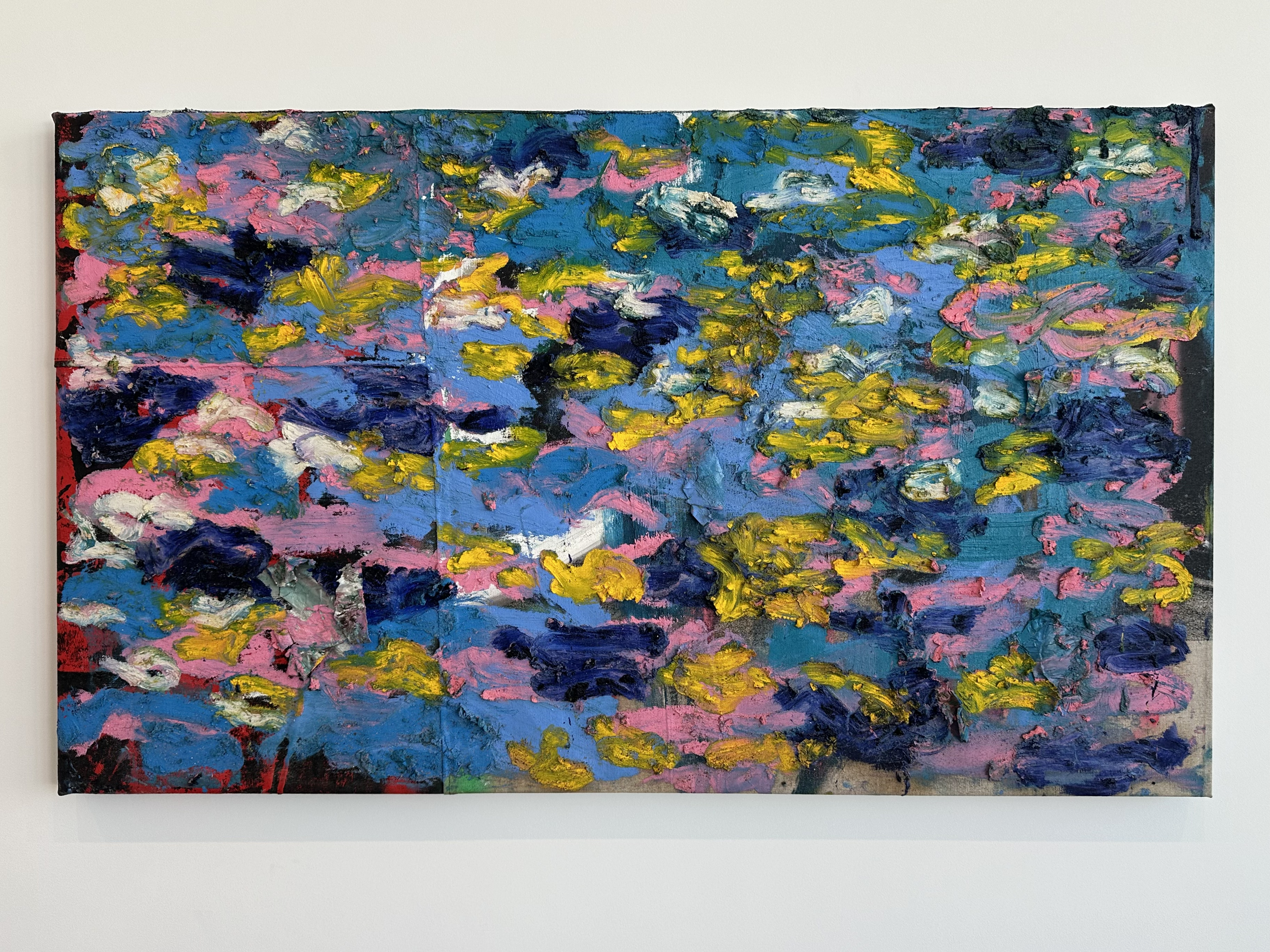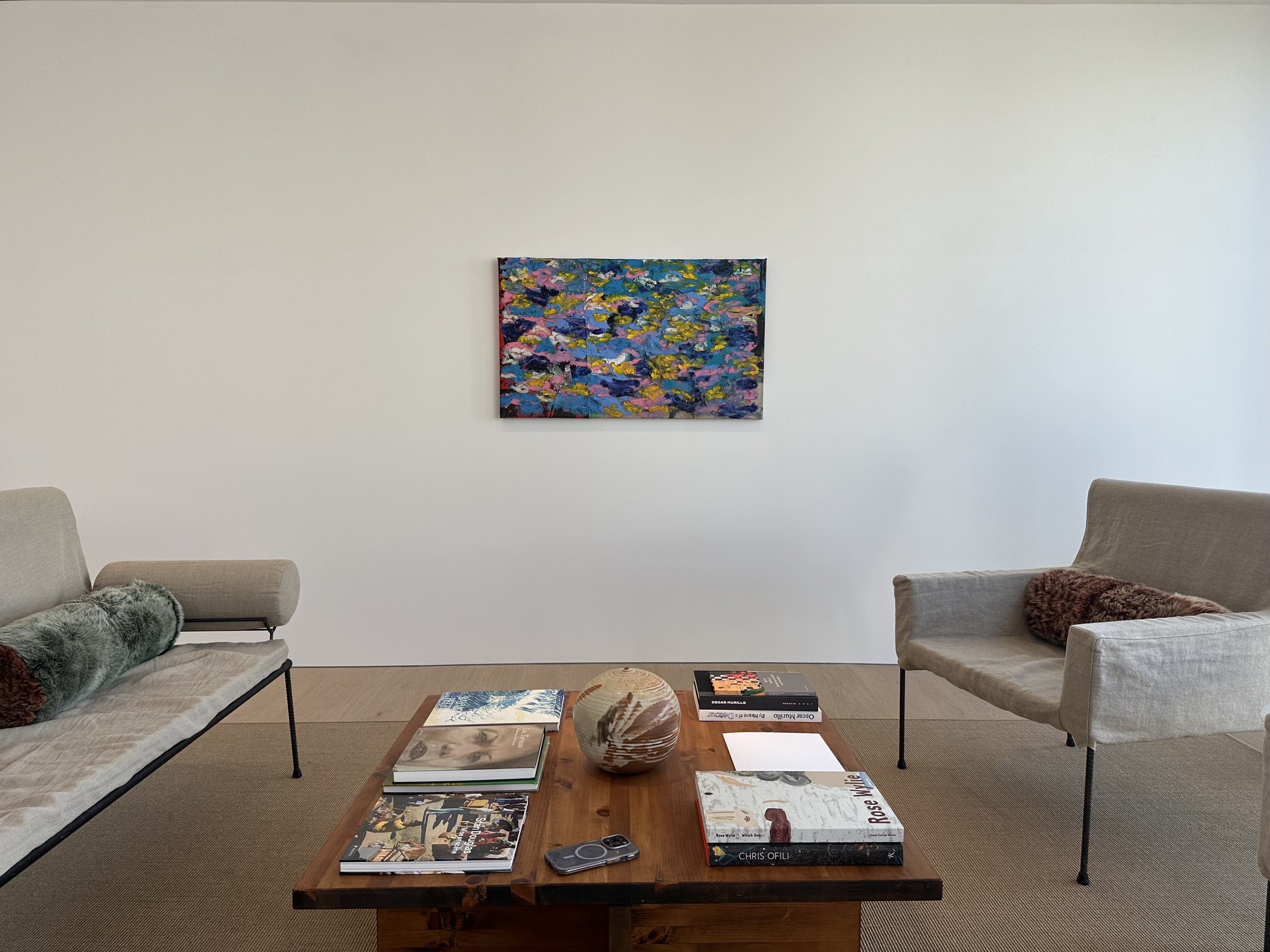New Acquisition Highlight.
This Oscar Murillo “surge” painting is now headed to a new home in California.
OSCAR MURILLO (B- 1986)
surge (social cataracts), 2021
Oil, oil stick, and spray paint on canvas on linen 28 1/2 x 48 inches
PROVENANCE
David Zwirner, Los Angeles
Sometimes I use a tool to test the barometer of a work of art by asking myself “could I write a thesis about this work?” With Oscar Murillo’s “surge” paintings one does not have to look too far to find a network of threads to pull on. This body of work does not operate in a linear way and is much more rhizomatic, referencing a myriad of topics from landscape painting, Claude Monet’s last years, social issues of today, the origins or Abstract Expressionism, and Murillo’s own body of work which all coalesce around the unifying idea of sight. The complexity of this series, is not only what saw Murillo win the Turner Prize, but also the subject of a new installation at the Tate this summer entitled “Flooded Garden.”
Monet’s last years were of a great fascination to Murillo because, tragically, Monet developed cataracts, a clouding of one’s vision. And yet, he continued to paint, unable to properly see cool colors and use his previous technique of using smaller brushstrokes. This gave way to a stylistic shift in his work, a body of work which has been debated as a spark of Abstract Expressionism and the dissolution of representation in painting. Murillo’s “surge” paintings echo Monet’s use of much broader strokes but he runs them horizontally across the canvas akin to an open sea.
While these Impressionist references are visible on the surface of Murillo’s works, his mark-making is more regimented and his gesture more patterned than his predecessors and seeks to “mesmerize” a viewer. What is not visible is what is underneath Murillo’s heavy impasto surface. Under these paint layers are unseen words, something one associates with Murillo’s early works. These words sit in “darkness” and allude to Murillo’s idea of “social cataracts”—two works that don’t seem to fit together. However, all of Murillo’s works have some societal engagement; this phrase for him references a “collective blindness” that cannot see its own flaws like injustice. And so all of the elements in these seemingly quiet paintings come together in a surge of historical references, ideology and aesthetics.


